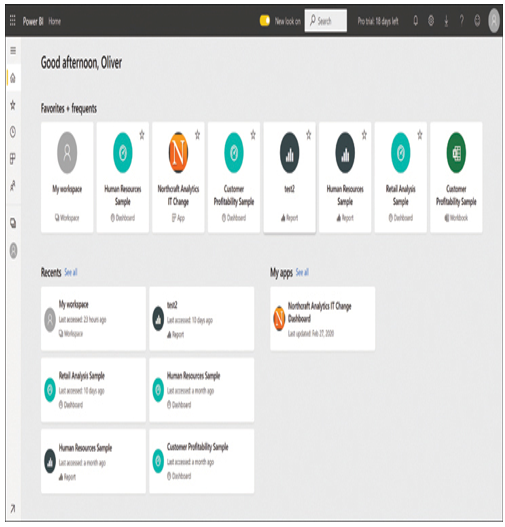Skill 1.3: Understand Power Platform administration and security
As with any other application or service, the Power Platform tools require attention to administration and security to configure them properly and prevent them from being misused.
Power Platform itself is not a single service; the name refers to a collection of services that organizations can use individually or in combination. The Power Platform tools—Power BI, Power Apps, Power Automate, and Power Virtual Agents, along with their underlying components (Common Data Service, data connectors, and AI Builder)—run as individual services, meaning that they are cloud-based software products that are hosted by Microsoft Azure on a software as a service (SaaS) basis. Each of the four main tools has its own portal, as shown in Figure 1-35, in which users can design and consume content.

FIGURE 1-35 A Power Platform tool portal
Note Power BI Desktop
The only Power Platform component that is not a cloud-based service is Power BI Desktop, which is a standalone Windows application that designers can use to establish data connections; create reports, dashboards, and apps; and upload them to the Power BI service in the cloud, which makes them available to consumers. Power BI Desktop is not an essential component; designers can create dashboards, reports, and apps in the Power BI Service portal as well.
Because they are Azure services, the Power Platform tools can take advantage of many of the advantages that Azure provides, including high availability due to redundant data centers, localized access using Azure Traffic Manager (ATM), and identity management provided by Azure Active Directory (AAD).
This skill covers how to:
■ Describe how to manage apps and users
■ Describe data loss prevention (DLP) policies
■ Describe how the platform supports privacy and accessibility guidelines
